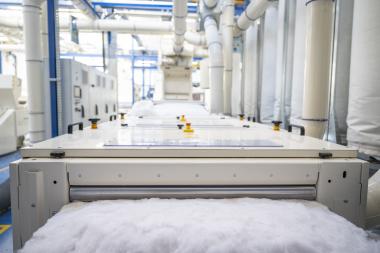ANDRITZ at TECHTEXTIL 2022
International technology group ANDRITZ will be presenting its innovative nonwovens production and textile solutions at Techtextil in Frankfurt from June 21 to 24. The ANDRITZ product portfolio covers state-of-the-art nonwovens and textile production technologies, such as air-through bonding, airlay, needlepunch, spunlace, spunbond, wetlaid/WetlaceTM, converting, textile finishing, recycling, and natural fiber processing. For Techtextil, special focus lies on technologies for textile recycling, needlepunch, airlay, wetlaid glass fibers and textile calendering.
TEXTILE RECYCLING TECHNOLOGIES BASED ON TEARING
With the acquisition of ANDRITZ Laroche SAS, ANDRITZ has expanded its product portfolio to include airlay and recycling technology as well as bast fiber processing technologies. Complete recycling lines for post-consumer and industrial textile waste to produce fibers for re-spinning and/or nonwoven end-uses are one focus of this product range. Customer awareness and regulations are forcing clothing brands to recycle their textile waste in their own products. Recycled fibers can also be used in the nonwovens industry for various applications, for example in the automotive industry, for insulation, mattresses, and furniture felts.
ANDRITZ Laroche offers a complete process range of tearing lines from 50 up to 3,000 kg/h, which can be used for almost all types of pre/post-consumer textile waste. The aim is to preserve the character of the original fibers, for example cotton, by maximizing fiber length, strength and feel.
Andritz AG








